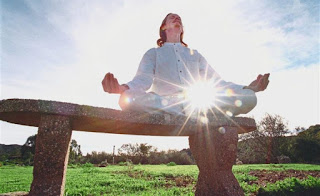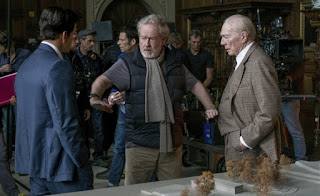Taming The ‘Monkey Mind’ With Meditation - Meditators often tell you that meditation means emptying your thoughts, which will eventually lead you to happiness.
But is it possible to think of nothing when your mind is constantly busy pondering, strategising, analysing and whatever else?
Of course not.
The mind acts like a crazy monkey and causes plenty of destruction – if you allow the monkey to rule.
“I call it the monkey mind,” says renowned monk and meditation teacher Yongey Mingyur Rinpoche.
“Monkey mind says do this and do that, and if we listen, it causes problems and we can become crazy.
“If we fight the monkey mind, it becomes the enemy, so make friends with it.
“How? Keep giving it jobs that it’s happy doing.
“Now, instead of it being the boss, you are the boss. Meditation is like giving it a purpose so it has no reason to wander.”
Basically, meditation is a precise technique for resting the mind and attaining a state of consciousness that is totally different from the normal waking state.
“Many people think meditation is about freeing the mind, concentrating, daydreaming, focusing on one object, emptying the brain, etc…
brain, etc… all these are misunderstood.
“Meditation is what we call awareness; if you know you understand, then that is awareness; if you don’t understand and you know you don’t understand, that is also awareness; if you know you’re confused, that’s also awareness,” says the author of the best-selling book, The Joy of Living: Unlocking the Secret and Science of Happiness, which debuted on the New York Times bestseller list in 2009 and has been translated into over 20 languages.
The thoughts that pass through your mind are responsible for everything that happens in your life.
Your predominant thoughts influence your behaviour and attitude, and control your actions and reactions.
There are numerous ways to meditate and different personalities require different techniques. There is no one-size-fits-all. The most important thing is to keep the spine straight and relax your muscles.
Two types of meditation
According to Mingyur Rinpoche, there are two styles of meditation – formal and informal.
In the formal method, practitioners either sit on the chair and touch the feet to the ground or sit on the floor with the legs folded and crossed, remove all distractions (no gadgets), and watch their breath.
“In the beginning, if the mind is very restless, just spend five minutes to watch your breath. Bit by bit, extend the time.
“Watching the breath is very boring. People always ask me how this can relate to happiness.
“‘I’m looking for happiness and you ask me to watch my breath!’ they tell me,” relates Mingyur Rinpoche.
“But you’re actually getting freedom from the monkey mind and using it the right way so that it doesn’t create problems.
“It’s not easy, so you have to build up a habit slowly… take baby steps and don’t be too ambitious or you’ll be back to square one.
“If you do something for 20 to 30 days, then it will become a habit.
“Sometimes you fail, but that is good because failure is the mother of success.”
In an informal setting, meditation can be anywhere, any time, under any circumstances – while walking, on the phone, playing the stock market, etc.
Mingyur Rinpoche says, “If you need to think, focus on the breath and ideas will become clearer and more creative.
“If you’re thinking without breathing, the creativity becomes lower.
“Everyone has the potential to meditate as long as you’re willing and you comprehend the technique.”
He teaches throughout the world, and his candid, often humorous accounts of his own personal difficulties have endeared him to thousands of students across five continents.
He was in town recently for a retreat and a series of talks.
Happiest person alive
Born in 1975 in the Himalayan border regions between Tibet and Nepal, Mingyur Rinpoche was drawn to a life of contemplation from a young age.
He spent many years of his childhood in strict retreat.
At the age of 17, he was invited to be a teacher at his monastery’s three-year retreat, a position rarely held by such a young lama.
In addition to extensive training in the meditative and philosophical traditions of Tibetan Buddhism, Mingyur Rinpoche has also had a lifelong interest in Western science and psychology.
At an early age, he began a series of informal discussions with the famed neuroscientist Francisco Varela, who came to Nepal to learn meditation from his father, Tulku Urgyen Rinpoche, a meditation master.
In 2002, Mingyur Rinpoche and a handful of other long-term meditators were invited to the Waisman Laboratory for Brain Imaging and Behaviour at the University of Wisconsin-Madison, United States, where scientists examined the effects of meditation on the brains of these advanced meditators.
The left prefrontal area of their brains showed a significantly higher degree of activation, a pattern often associated with the feeling of being “positively engaged, goal-directed, enthusiastic, and energetic”.
What was deemed instrumental was the length of meditation practice in one’s lifetime, which underlined that, as with any worldly or spiritual endeavour, practice matters.
The results of this ground-breaking research was reported in National Geographic and Time, and Mingyur Rinpoche has often been referred as one of the “happiest persons alive”.
The animated Mingyur Rinpoche brushes all of it aside.
The abbot jokes, “I did some kind of brain ‘competition’ with 10 other meditators to see who was the happiest and I won!
“Happiness cannot be measured like that, but the reporter has the freedom to write whatever he wants, so I just let it be.
“For me, happiness is a sense of joy, contentment that comes from within and not necessarily from outside circumstances.”
With just a toothbrush
By 35, Mingyur Rinpoche was enjoying a high profile career as a globe-trotting meditation teacher in the Kagyu tradition of Tibetan Buddhism, had a bestselling book to his name, a monastery in India, and Tergar, an international organisation based in the US with branches worldwide.
Yet something was amiss and he decided to go on a wandering retreat to improve his meditation skills and learn about life.
Armed with only a toothbrush, he left a note to say he was away on a retreat and disappeared from the monastery for four-and-a-half years. No one could trace him during that period.
“I was born to a nice family and was recognised as a Rinpoche. I had many good friends and students.
“I was a Dharma prince, so I never went out and I never stayed on the street for more than an hour.
“My solitary retreat led me to big discoveries. I was naïve. It was like a karmic suicide mission: no money, no house, no friends, no support, nothing. Just me, alone,” he says of his experience.
He fell sick numerous times, almost died, but survived to tell his tale.
He finally returned to Nepal after discovering it was struck by a devastating earthquake, which left more than 9,000 dead, in 2015.
For someone who suffered panic attacks as a child, Mingyur Rinpoche has come far.
“I was fearful of strangers, fireworks, cars, thunderstorms, etc, but didn’t know the cause.
“One day, I went to a cave near my house and pretended to meditate, so I recited the mantra in my mind.
“I didn’t know it was meditation, but I felt good, so I asked my father to teach me.
“It took almost five years before I could get rid of my panic attacks.
“Yes, like anyone, I’m also lazy. I like the idea of meditation, but I didn’t like to practise much then!
“Now I try to do an hour daily. The timing depends on your personality.
“My mission is to make everybody recognise what I call basic innate goodness, which means everyone has this wisdom, awareness and compassion that is within us to make us happy,” he shares.












